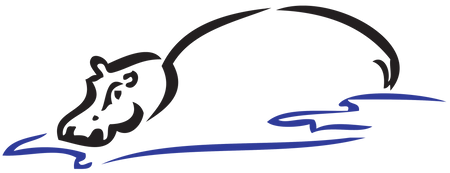You have no items in your shopping cart.
The wide Electric Fencing Tape was introduced to the market and marketed very effectively on the premise that horses would find a fence constructed with a tape easier to see than regular fencing - is this correct? Possibly not.
An article on this subject from Evelyn B. Hanggi, M.S., Ph.D. California.
Good with depth, trouble with depth; colourblind, not colourblind; sharp vision, blurry vision, night vision – which is it? Answers differ, depending on who is doing the talking. More often than not, the speaker is someone people trust and, therefore, do not question — the well-known clinician, the feared riding instructor, the respected old ranch hand. Unfortunately, some of these authorities base their comments on hearsay, on folklore, on myth.
Hearsay is a worry. Generally untested, most likely undocumented, it is the cause of much misunderstanding. How, then, does one distinguish fact from fiction? Simple really -,scientific study into equine vision is at an all time high, with discoveries offering evidence that horses see a world not so far removed from ours. Here is what science tells us:
Field of View: Having eyes in the back of their heads, almost.
Remember in school when your teacher, with her back to the class, always knew what everyone was up to? Seemed she had eyes in the back of her head. Or maybe she had eyes like a horse.
Horses have lateral eye placement, meaning their eyes are located on the sides of their heads. This gives them a much larger field of view compared to humans; in fact, when holding their heads level, they possess a nearly spherical field of vision. An advantage in detecting predators, many prey animals have this sort of eye placement. But horse eyes are also placed somewhat frontally, affording them binocular overlap ranging from 55 to 65 degrees.
With vision that extends almost a full horizontal circle, horses have no problem seeing what goes on around them. Blind areas exist only within a narrow region to the rear as well as a small area perpendicular to the forehead and directly below the nose. Even so, a tiny shift of the head suffices in bringing these areas into view.
Visual Acuity: On a clear day, can they see forever?
The ramp retina theory is passé. Long popular, even in veterinary textbooks, this concept sought to explain how the equine eye focuses. It was thought that objects at various distances were brought into focus by the horse raising or lowering its head so that images could fall onto different areas of the retina. Upon physical examination, however, scientists found little indication that the retina was ramped; on the contrary, they discovered that what small slope did exist slanted opposite to that which might have helped focusing.
More exactly, the horse’s retina contains a narrow horizontal streak across the center of the eye densely packed with receptor cells called cones. Providing an elongated band of acute vision over much of the lateral range, this visual streak probably serves the same purpose as the fovea in the human eye. Acuity drops off rapidly outside the fovea in humans as it does outside the streak in horses. Heads bouncing up and down serves no advantage to horses in terms of keenness of vision.
Does the horse see fairly clearly at distance? Well, yes. In fact chances are your horse sees better than you! Whereas normal human vision is 20/20, horses are rated at 20/30. In comparison, cats come in at 20/75, rats at 20/300.
Horses and Colour Vision:
Cones are multifunctional. They control fineness of detail but they also control colour when more than one type of cone exists. Humans with normal colour vision are trichromats: we see four main hues – red, green, blue, and yellow, as well as many subtle variations.
The topic of equine colour vision has raged controversially for years. Backyard owners swear their horses prefer buckets and blankets based on colour; top trainers sell books proclaiming horses are colourblind. Yet, when asked how they know, most people cannot support their statements, falling back on the adage “Well, so and so said so.” Enter again the researcher. Equine vision expert Dr. Brian Timney, of the University of Western Ontario , explains that horses are like humans with colour deficiencies. For example, humans with red-green colour vision defects have only two hues (blue and yellow) rather than four. Such dichromats do not see intermediate hues, seeing instead white or gray or a faded form of the two colours.
What colours, then, do horses see? “Horses have little difficulty in discriminating red or blue from gray. With respect to green and yellow, the results are mixed,” says Timney. His findings are similar to those from earlier studies but other researchers’ results differ. Exact answers have proved elusive in colour vision research because of the difficulty in designing experiments with adequate controls (such as for brightness). Nonetheless, we can reasonably say that horses do see colours and may react positively or negatively to them.
Scotopic Vision: It was a dark and stormy night.
And your horse probably saw more than you did. But scientific research into equine night vision remains sparse. What there is of it is based on anatomical and physiological factors, not behavioural. What we do know is that the equine retina has many more rod receptors than cones, about 9:1. These receptors are responsible for vision in dim light. The eye also contains a tapetum lucidum (the reason eyes of nocturnal animals shine in the dark), which reflects light and enhances the light-gathering properties of the rods. All this indicates good night vision but there may be a hitch. The tapetum lucidum, while increasing sensitivity to dim light, may also, because of light scattering, reduce visual discrimination. Nonetheless, horses are active during the night, grazing, moving about, avoiding obstacles. This gives us a behavioural clue that their scotopic vision is superior to humans.
Depth Perception: Are puddles the terrestrial equivalent of celestial black holes?
Think about it. How can an animal gallop full speed over uneven ground, screech to a halt mere inches from a fence, easily clear high hurdles, step over rocks and logs, or nudge a friend gently, with inadequate depth perception? Put that way, it sounds rather silly, does it not? Yet, no small number of horse people (even equine professionals) persist in their beliefs that horses do not possess this visual ability.
This notion stems from the idea that because horses have laterally placed eyes, they have no binocular vision, hence, no depth perception. This is wrong. Firstly, horses do have substantial overlap in their fields of view and secondly, some depth perception exists even when only one eye is used.
Let us look once more at the scientific evidence. In one study, horses were tested for recognition of depth in pictures using the famous visual illusion, the Ponzo Effect. “The sense of depth is conveyed by a flat image when lines that appear as separate at the edge of the picture converge near the center,” explains Timney. Horses had to choose between a photograph showing strong depth cues – converging railroad tracks – and a photograph that lacked obvious cues. Overwhelmingly, the horses went for the railroad tracks. “Not only could they recognize depth in pictures,” Timney says, “but they also must be susceptible to the same kinds of visual illusions that we perceive.”
Timney next investigated the role of binocular vision in the perception of depth with the use of random-dot stereograms – pairs of pictures that look like flat patterns of random dots when viewed normally. However, when these pictures are tinted and viewed through red and green filters (remember those weird 3D glasses at the movies?), a shape emerges to individuals with stereoscopic capability. Amazingly, when horses wore red and green goggles, they behaved as if they, too, saw depth in such pictures. “Apparently, horses have many of the same depth-detecting skills that we have,” Timney says. “They have true stereoscopic vision, despite having lateral eyes.”
Why do horses avoid puddles? Perhaps they simply do not want to get their feet wet.
Interocular Transfer: Seeing eye to eye.
One of the purposes of the Equine Research Foundation is to test the validity of myths in the horse world. One heard time and again involved the idea that horses cannot recognize with one eye objects they had previously seen only with the other eye (such as when returning from a trail ride). Hence, they spook. Reasoning along the lines of the two sides of the brain not being connected, thus, no transfer of information, was thrashed about by layperson and veterinarian alike.
This would make the horse rather bizarre because all placental mammals have a corpus callosum, the structure in the brain connecting both hemispheres. But the presence of this structure alone is not enough to prove transfer, just as the presence of cones does not necessarily confirm colour vision. To find out for sure, the ERF ran a series of interocular transfer tests using several different figures. Horses were trained to select one of a pair of black shapes (say, a circle instead of a rectangle) with one eye blindfolded. Once they reliably chose the circle – a learning task that could take hundreds of repetitions – the blindfold was switched to the other eye. The horses chose the circle immediately, clearly demonstrating that they recognized the object previously only seen with the other eye.
Review
The horse’s visual world is a little different from ours – possibly a little less colourful but oh so much broader and useful around the clock. The horse’s eyes look quite different from ours but function quite similarly – with good depth perception, eye-to-eye transfer, and rotation ability. We are alike but also different because of what is important to us as a species. As owners, as trainers, as handlers, as caretakers, we must consider this if we desire to excel with horses.
Original Article by; Evelyn B. Hanggi, M.S., Ph.D. An equine cognitive behaviourist and the president and cofounder of the non-profit Equine Research Foundation in California .
From this it is safe to assume that a horse will see an Electric Fence better than a human will at all times of the day.








← Older Post Newer Post →
0 comments